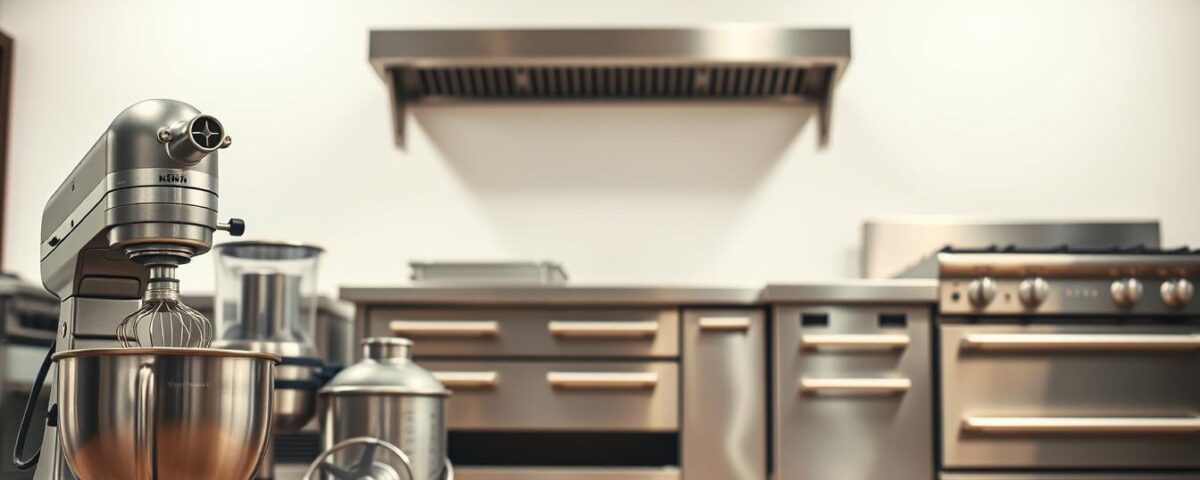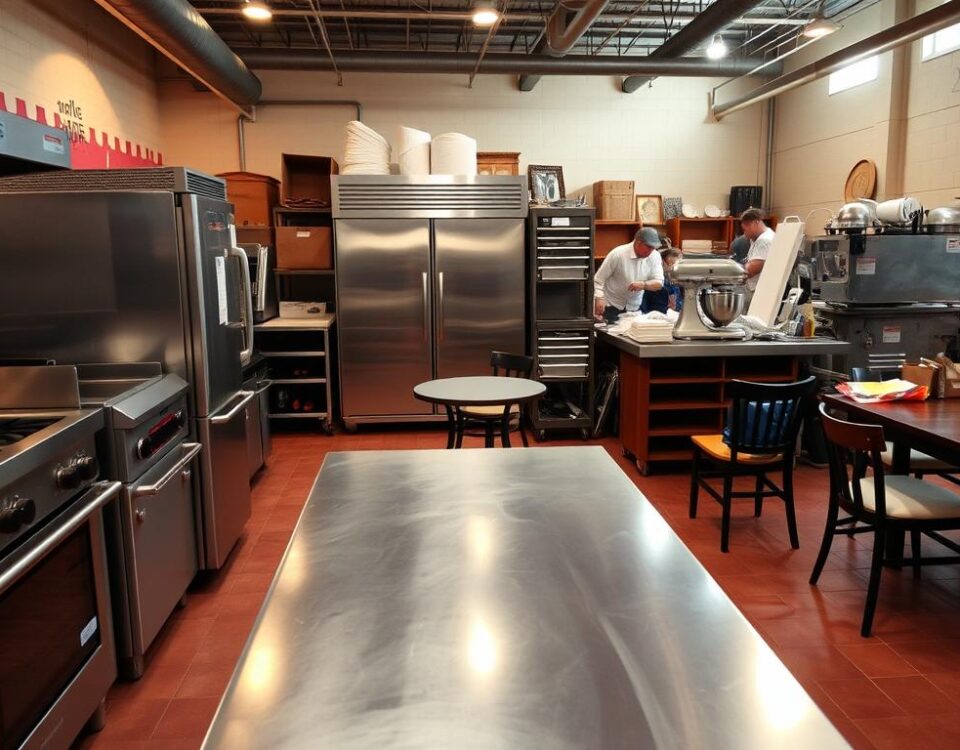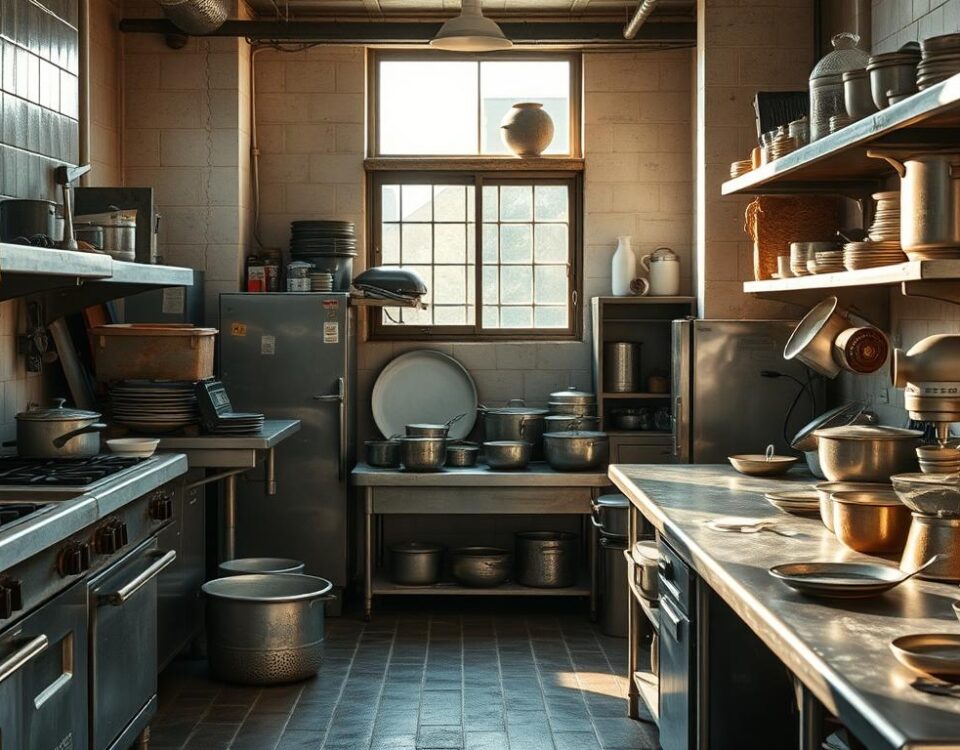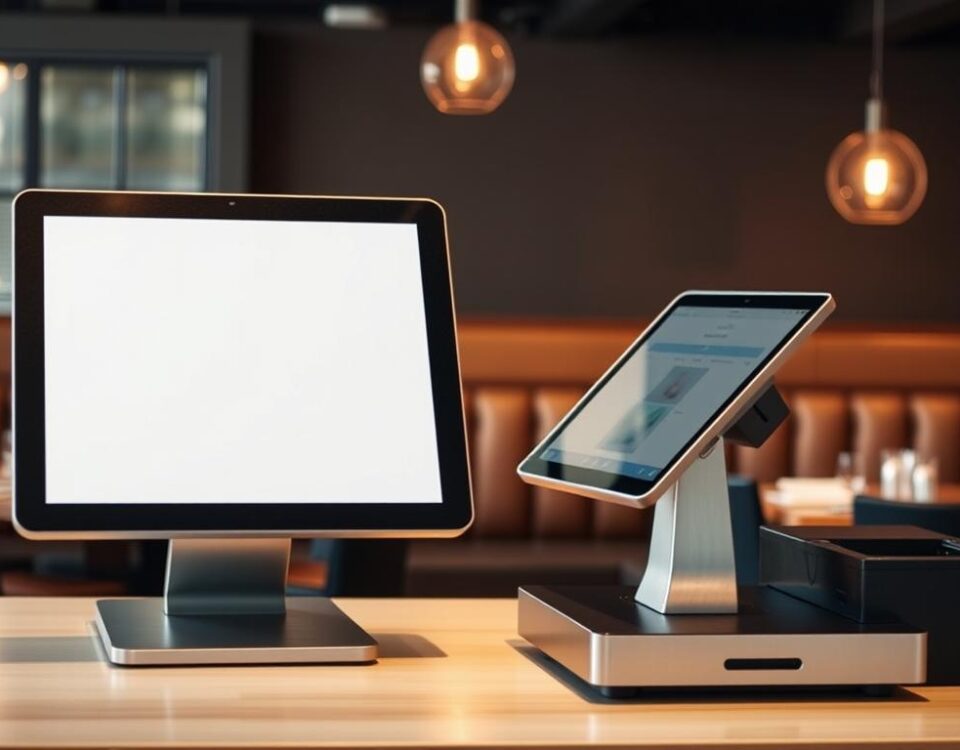
Square for Restaurants: Tools That Boost Profit Fast
October 2, 2025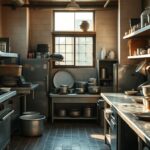
I Tried Buying Used Restaurant Equipment—Here Are the Results
October 3, 2025As a restaurant owner, I’ve learned that investing in the right equipment is crucial for the success of my business. I recall a time when a faulty kitchen appliance caused a significant delay in food service, resulting in customer dissatisfaction.
Did you know that restaurant equipment is one of the three major expense categories for foodservice operations, alongside food and labor? A staggering statistic reveals that poorly chosen equipment can lead to increased operational costs and decreased customer satisfaction.
To avoid costly mistakes, it’s essential to ask the right questions when purchasing from a restaurant supply store. In this guide, I’ll walk you through the key considerations to ensure you get the best value for your investment.
Key Takeaways
- Understand the importance of investing in quality equipment for your restaurant.
- Learn how to assess your restaurant’s specific needs for kitchen supplies.
- Discover the key factors to consider when purchasing restaurant equipment.
- Find out how to ensure you’re getting the best value for your business investment.
- Explore the benefits of making informed decisions about restaurant supply purchases.
Understanding Your Restaurant’s Specific Needs
Assessing your restaurant’s unique requirements is the first step in selecting the right equipment. To make informed decisions, you need to consider several key factors that directly impact your operations.
Assessing Your Menu Requirements
Your menu dictates the type and quantity of equipment you need. For instance, a fine-dining restaurant may require premium ovens and advanced food preparation tools, while a fast-casual eatery might prioritize high-capacity fryers and grills. I recommend conducting a thorough menu analysis to identify the specific cooking equipment and tools necessary for your dishes.
Evaluating Your Kitchen Space and Layout
Before purchasing equipment, it’s essential to measure your kitchen layout and identify areas for cooking, storage, and food preparation. Consider factors like space, ventilation, utilities access, and traffic flow to create an efficient workflow. A well-planned kitchen equipment layout can significantly enhance productivity and reduce operational costs.
Determining Your Production Volume
To determine your equipment needs, you must assess your production volume based on expected customer traffic, peak hours, and menu complexity. This analysis will help you choose equipment that meets your demands without excessive capacity. It’s also crucial to consider potential future expansions or changes in your concept to ensure your equipment choices are future-proof.
By carefully evaluating these factors, you can create a comprehensive equipment needs assessment document that guides your purchasing decisions and ensures you’re well-prepared to meet your restaurant’s operational needs.
Essential Questions Before Buying Restaurant Supply Equipment
When it comes to outfitting your restaurant with the necessary equipment, asking the right questions can save you time and money in the long run. Before making a purchase, it’s crucial to assess your needs carefully.
Is the Size Right for Your Kitchen?
Be sure to measure the space in your kitchen before you even start shopping for equipment. This will help you avoid buying something that won’t fit or that will disrupt your kitchen’s workflow. Consider the dimensions of the equipment and how it will be positioned in relation to other appliances and workstations.
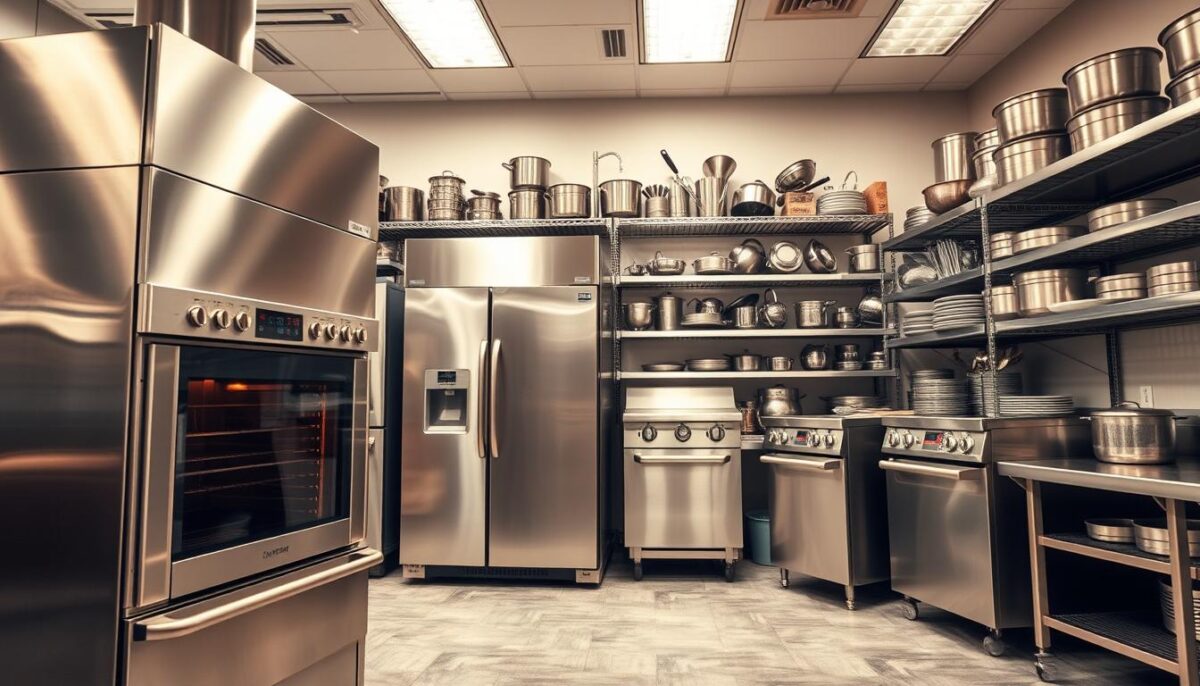
What Features Are Deal Breakers vs. Nice-to-Have?
The restaurant equipment industry often adds features to make products more saleable, but this can increase the price. A steamer with all the bells and whistles may look great, but if you aren’t going to use those features, you’re wasting money. Differentiate between essential features and “nice-to-have” additions.
| Feature | Essential | Nice-to-Have |
|---|---|---|
| Digital Controls | Yes | |
| Multiple Cooking Modes | Yes | |
| Automatic Shut-Off | Yes |
Does It Align with Your Workflow?
You should also have an idea of your workflow and the kitchen layout that will best support an efficient operation. Ensure that the new equipment integrates well with your existing setup and doesn’t hinder staff movement or food preparation processes.
By carefully considering these factors, you can make an informed decision when purchasing restaurant supply equipment that meets your kitchen’s specific needs.
Quality vs. Cost Considerations
The decision to invest in restaurant equipment involves a delicate balance between quality and cost. As a restaurant owner, you’re constantly faced with choices that impact your bottom line, and equipment purchases are no exception.
When evaluating equipment, it’s essential to look beyond the initial purchase price. The total cost of ownership encompasses various factors, including energy usage, maintenance, warranty, installation costs, delivery costs, and replacement parts. For instance, a commercial fryer that is cheaper upfront might consume oil at a faster rate, leading to higher ongoing expenses.
Balancing Upfront Investment with Long-Term Value
To make informed decisions, you need to balance the upfront investment with the long-term value of the equipment. This involves considering the expected lifespan of the equipment and calculating the annual cost of ownership.
Calculating Total Cost of Ownership
| Cost Component | Description | Example |
|---|---|---|
| Purchase Price | Initial cost of the equipment | $1,000 |
| Energy Costs | Ongoing energy expenses | $200/year |
| Maintenance Costs | Regular maintenance and repairs | $100/year |
| Replacement Parts | Cost of replacing worn-out parts | $50/year |
| Total Cost of Ownership | Sum of all costs over the equipment’s lifespan | $2,350 (over 5 years) |
When to Splurge vs. When to Save
Not all equipment is created equal, and some categories warrant higher investment than others. For heavy-use cooking equipment, such as fryers and ovens, investing in high-quality products can lead to long-term savings through reduced maintenance and replacement costs.
For example, a high-end commercial fryer might be more expensive upfront but could last longer and perform more consistently, resulting in cost savings over time.
Total Cost of Ownership Analysis
To conduct a total cost of ownership analysis, you need to consider all the costs associated with the equipment over its lifespan. This includes the purchase price, energy costs, maintenance costs, and replacement parts.
By doing so, you’ll be able to make more informed purchasing decisions that balance your immediate budget constraints with long-term value considerations.
Energy Efficiency and Sustainability Questions
As a restaurant owner, investing in energy-efficient equipment can significantly lower your utility bills and carbon footprint. The kitchen is one of the greatest energy usage areas in most facilities, but restaurant equipment has made significant improvements in energy efficiency to combat this.
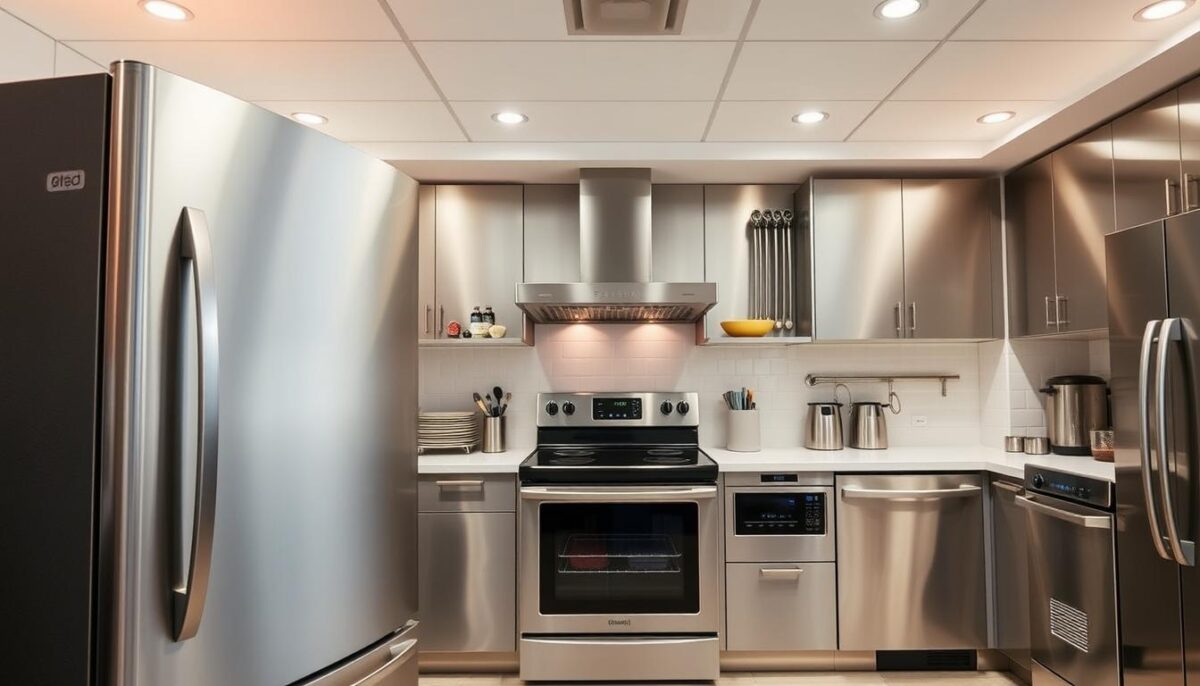
Is the Equipment Energy Star Rated?
When purchasing new equipment, it’s essential to check if it’s Energy Star rated. Energy Star is a program that helps businesses save energy and reduce greenhouse gas emissions. An Energy Star rated piece of equipment indicates that it meets energy efficiency standards set by the U.S. Environmental Protection Agency.
Potential Rebates and Tax Incentives
Not only will a more energy-efficient piece of equipment save money on your utility bills, but with an Energy Star Rated equipment purchase, you may also be eligible for rebates on your taxes or from your utility provider. These rebates vary from state to state and sometimes even in metropolitan areas, but you can find more information on www.energystar.gov/rebate-finder.
Long-Term Energy Savings Calculation
While you may spend a bit more upfront on an energy-efficient equipment choice, you will most likely save more than that amount on your utility bills over time. To determine if the premium price for efficient equipment is justified, it’s crucial to calculate the long-term energy savings. This involves considering factors like the equipment’s energy consumption, your current energy costs, and the expected lifespan of the equipment.
By choosing energy-efficient restaurant equipment, you not only reduce your operational costs but also contribute to a more sustainable environment. This can be a significant marketing advantage as consumers become more environmentally conscious. When evaluating kitchen equipment, look for features that reduce energy consumption without compromising performance.
Warranty and Service Inquiries
The warranty and service terms of your restaurant equipment can significantly impact your overall costs and operational efficiency. As a restaurant owner, it’s crucial to understand these aspects before making a purchase.
Warranty Coverage Details
Understanding what’s covered under the warranty is vital. Typically, warranties cover parts and labor for a specified period. However, the extent of this coverage can vary significantly between manufacturers and equipment types. For instance, a commercial ice machine with an 8.5-year lifespan might have a warranty that lasts for 1, 3, or 5 years. Choosing equipment with a longer warranty can be more cost-effective in the long run.
Evaluating Warranty Coverage
- What’s typically covered under the warranty?
- Are there any exclusions or limitations?
- Is it a parts-only or parts-and-labor warranty?
Local Service Providers
Researching the availability of local service providers for your specific equipment brands is crucial. Quick access to service can minimize downtime and keep your operations running smoothly.
Maintenance Requirements and Costs
Regular maintenance is key to extending the lifespan of your equipment and ensuring it operates efficiently. Understanding the maintenance requirements and associated costs can help you plan and budget accordingly.
Maintenance and Warranty Validity
| Maintenance Task | Frequency | Cost |
|---|---|---|
| Cleaning Filters | Monthly | $50 |
| Inspecting Electrical Components | Quarterly | $100 |
| Replacing Wearable Parts | Annually | $200 |
By understanding warranty and service inquiries, you can make more informed decisions when purchasing restaurant equipment, ultimately saving time and reducing operational costs.
Comparing Suppliers and Purchase Options
When it comes to purchasing restaurant equipment, the supplier you choose can significantly impact your business. The decision involves more than just comparing prices; it’s about evaluating the overall value each supplier brings to the table.
Local Restaurant Supply Stores vs. Online Retailers
One of the primary decisions you’ll make is whether to purchase from a local restaurant supply store or an online retailer. Local stores offer the advantage of personalized service and quicker delivery times. For instance, at Curtis Restaurant Supply, we receive your equipment, uncrate, inspect, assemble, and set it in place. This not only saves you time but also helps catch any freight damage or factory defects early on.
On the other hand, online retailers can sometimes offer lower prices, but you need to factor in additional costs for delivery, potential damage, and the hassle of managing multiple shipments from different manufacturers.
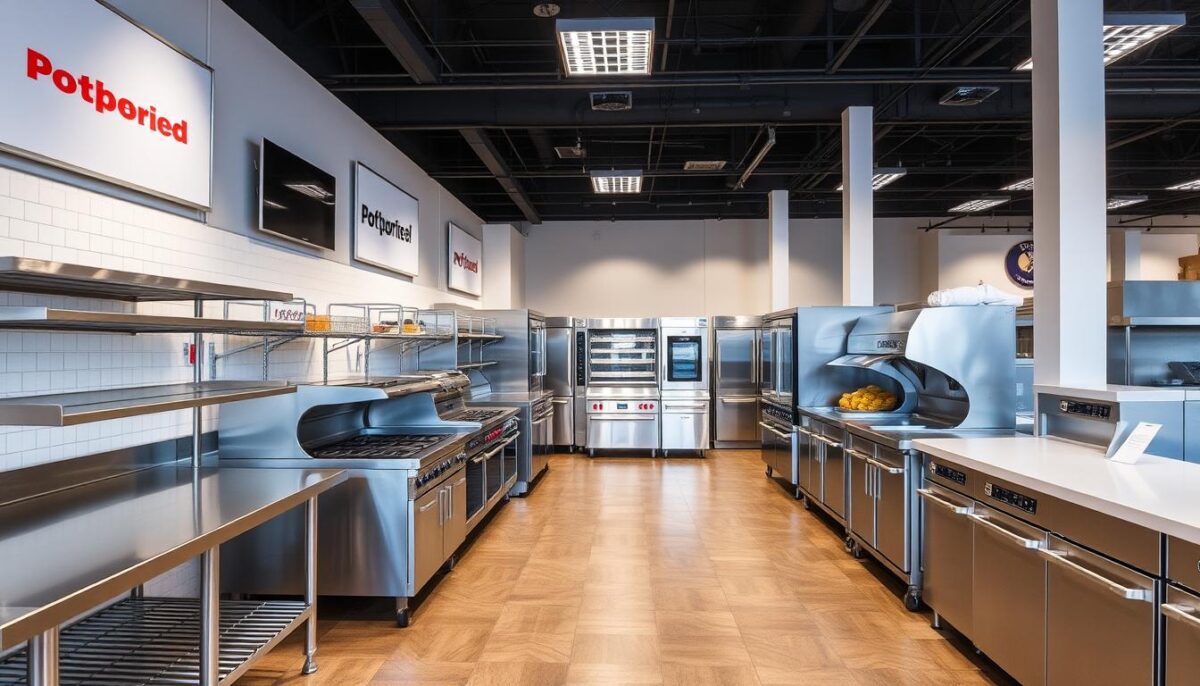
New vs. Used Equipment Considerations
Another critical consideration is whether to buy new or used equipment. New equipment comes with the latest technology, warranties, and the peace of mind that you’re getting a product that will last. However, it can be more expensive. Used equipment, if properly maintained, can be a cost-effective option. Categories like dishware and certain kitchen tools are often safe to buy used, but for critical equipment like ovens or refrigerators, it’s usually best to purchase new to ensure reliability and safety.
Delivery, Installation, and Training Services
The value-added services that suppliers offer can significantly impact your overall experience. Look for suppliers that provide comprehensive services, including delivery, installation, and staff training. These services can save you time and ensure that your equipment is properly set up and functioning correctly from the start.
| Service | Local Supplier | Online Retailer |
|---|---|---|
| Delivery | Typically included, with options for expedited service | Often extra, with variable delivery times |
| Installation | Usually available, ensuring proper setup | Rarely included; may require third-party service |
| Training | Frequently offered, enhancing staff proficiency | Seldom provided; may require additional cost |
By carefully evaluating these factors and choosing a supplier that meets your needs, you can ensure a smoother process and better outcomes for your restaurant.
Making Your Final Decision
With your research complete, it’s time to make an informed decision about the equipment that will drive your restaurant’s success. To do this, you’ll need to synthesize all the information gathered and prioritize your needs.
Start by creating a list of your equipment needs versus wants. This will help you allocate your budget accordingly and ensure that you’re investing in the right kitchen equipment for your restaurant. Consider the layout of your kitchen and how the equipment will impact food quality, customer satisfaction, and staff efficiency.
If you need to spread your investments over time due to budget constraints, create a timeline for your equipment purchases. This will help you stay organized and ensure that you’re making progress towards setting up a well-equipped kitchen. When possible, test equipment before purchasing by visiting showrooms or restaurants that use similar cooking equipment.
As you make your final decision, be mindful of common pitfalls such as being swayed by last-minute sales tactics or overlooking critical specifications. Instead, trust your research and make decisions aligned with your restaurant’s unique concept and operational needs. By doing so, you’ll be able to create a safe and efficient kitchen environment that supports the preparation of high-quality food and enhances customer satisfaction.
Ultimately, making an informed decision about your restaurant equipment is crucial to the success of your business. By prioritizing your needs, staying within your budget, and focusing on safety, you’ll be well on your way to creating a thriving restaurant that serves delicious food to satisfied customers.
FAQ
What factors should I consider when assessing my menu requirements for kitchen equipment?
When evaluating your menu, consider the types of cooking equipment needed, such as commercial fryers from brands like Vulcan or Pitco, and the volume of food you need to prepare. This will help you determine the size and capacity of the equipment required.
How do I determine if the equipment is the right size for my kitchen?
To ensure the equipment fits your kitchen, measure your available space and compare it to the equipment’s dimensions. Consider the workflow and leave enough room for staff to move around comfortably.
What are the benefits of energy-efficient kitchen equipment, and how can I identify it?
Energy-efficient equipment, such as Energy Star rated appliances, can help reduce your energy costs and minimize your environmental impact. Look for the Energy Star label or check the manufacturer’s specifications to determine the equipment’s energy efficiency.
What should I consider when evaluating the total cost of ownership for kitchen equipment?
When calculating the total cost of ownership, consider not only the upfront cost but also ongoing expenses like energy consumption, maintenance, and repair costs. A more expensive piece of equipment may be more cost-effective in the long run if it’s energy-efficient and durable.
How can I ensure I’m getting a good warranty and adequate service for my kitchen equipment?
Research the manufacturer’s warranty and support options, including the availability of local service providers. Look for warranties that cover parts and labor for at least a year, and consider purchasing extended warranties or maintenance contracts for added protection.
What are the advantages and disadvantages of buying new versus used kitchen equipment?
Buying new equipment can provide the latest technology and warranty coverage, but it can be more expensive. Used equipment, on the other hand, can be more budget-friendly, but it may require more maintenance and have a shorter lifespan. Consider your budget and needs when deciding between new and used equipment.
What services should I expect from a restaurant supply store or online retailer?
When purchasing from a restaurant supply store or online retailer, expect services like delivery, installation, and training. Some retailers may also offer additional services like equipment maintenance and repair. Be sure to ask about these services when making your purchase.
